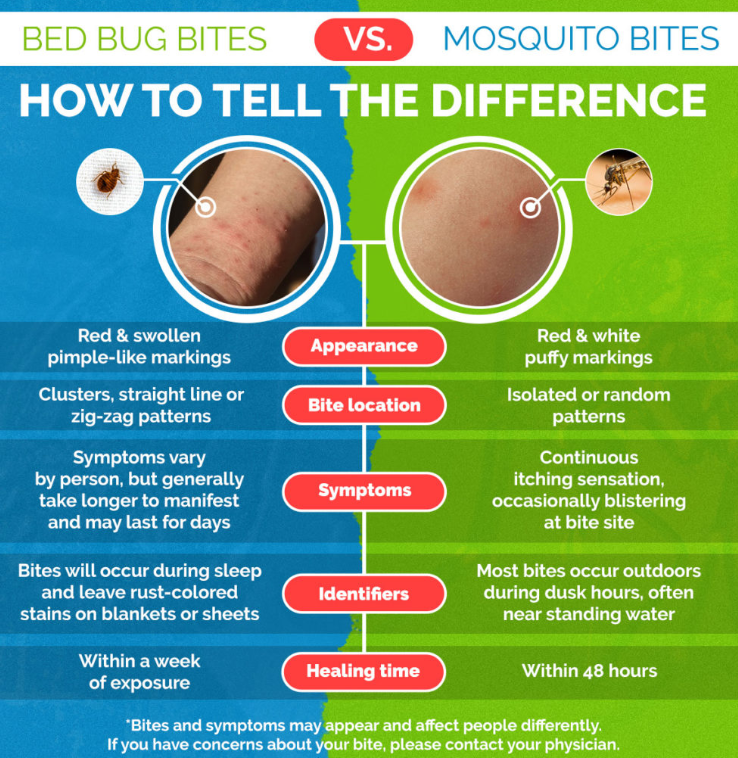BOURSESSENEGAL – identifying insect bites pictures can be tricky, especially when various bugs can leave different marks on your skin. Knowing how to recognize these bites is essential for your health and safety. In this comprehensive guide, we will explore the common types of insect bites, how to identify them, and provide pictures to help you recognize what you might be dealing with.
Understanding Insect Bites
Insect bites occur when insects pierce the skin to feed on blood or deliver venom. The reaction to a bite varies from person to person and depends on the type of insect. Some bites may cause mild irritation, while others can lead to serious health issues.
Common Symptoms of Insect Bites
Before we delve into identifying insect bites, let’s discuss some common symptoms:
- Redness and Swelling: Most bites will cause localized redness and swelling.
- Itching: Many people experience intense itching at the site of the bite.
- Pain or Discomfort: Some bites can be painful, particularly those from stinging insects.
- Blisters: In some cases, bites can cause blisters or welts.
Recognizing these symptoms can help you determine if you need further medical attention.
Types of Insect Bites
identifying insect bites pictures
Understanding the different types of insect bites will help you identify them more easily. Below are some common types of insect bites and pictures for reference.
1. Mosquito Bites
Identification: Mosquito bites typically appear as raised, red, itchy bumps. They may be small or larger, depending on the individual’s reaction.
Picture:
Mosquito bites are common during warmer months and can occur at any time of day. While they usually cause mild irritation, some individuals may experience allergic reactions.
2. Spider Bites
Identification: Spider bites can vary significantly. They might show two puncture wounds, accompanied by redness and swelling. In some cases, you might see a blister or a target-like appearance.
Picture:
Most spider bites are harmless, but some, like those from a black widow or brown recluse, require immediate medical attention.
3. Tick Bites
Identification: Tick bites may not be immediately noticeable. They often appear as a small, red spot. A tick may remain attached, which can complicate identification.
Picture:
Ticks can carry diseases, including Lyme disease, so removing them promptly is crucial. Look for ticks that are small, round, and sometimes dark.
4. Flea Bites
Identification: Flea bites usually appear in clusters. They often cause small, red bumps, and are typically very itchy. Flea bites commonly appear on the ankles and lower legs.
Picture:
If you suspect flea bites, check your pets, as they are common carriers of fleas.
5. Bed Bug Bites
Identification: Bed bug bites typically appear in a line or cluster and may resemble mosquito bites. They are often very itchy and can develop into red welts.
Picture:
If you wake up with unexplained bites, check your bedding for signs of bed bugs.
6. Ant Bites
Identification: Ant bites can vary depending on the type of ant. Fire ant bites usually create painful, itchy, and swollen red bumps that can blister.
Picture:
Other ants may cause mild irritation, but fire ants are particularly aggressive.
7. Hornet and Wasp Stings
Identification: Hornet and wasp stings can be painful, often resulting in a swollen, red mark. They may also cause a burning sensation.
Picture:
If you experience severe pain or swelling, seek medical help, especially if you have a known allergy.
How to Identify Insect Bites
When you encounter an insect bite, there are several factors to consider:
1. Location of the Bite
Where the bite occurs on your body can provide clues. For example, mosquito bites are often found on exposed skin, while ticks tend to attach in hidden areas, such as behind the ears or in the hair.
2. Appearance of the Bite
Take note of the bite’s appearance. Look for signs such as redness, swelling, or blistering. The color, size, and shape can help identify the insect responsible.
3. Symptoms Experienced
Consider the symptoms you experience following the bite. Itching, burning, or pain can indicate different insects. For instance, the intense itchiness from flea bites contrasts with the localized pain from a hornet sting.
4. Time of Day
The time of day can also provide context. Mosquitoes tend to be more active during dawn and dusk, while fleas and ticks may be encountered more frequently during outdoor activities.
First Aid for Insect Bites
Knowing how to treat insect bites can ease discomfort and prevent complications. Here are some general first aid steps:
1. Clean the Area
Wash the bite area with soap and water to reduce the risk of infection.
2. Apply a Cold Compress
Using a cold compress can help reduce swelling and numb pain.
3. Use Over-the-Counter Treatments
For itching or pain, consider applying hydrocortisone cream or taking an antihistamine.
4. Monitor for Allergic Reactions
Be aware of signs of allergic reactions, such as difficulty breathing or swelling in areas other than the bite. If these occur, seek medical help immediately.
When to Seek Medical Attention
While most insect bites are harmless, some situations require professional medical attention:
- Signs of Infection: If you notice increasing redness, warmth, or pus around the bite.
- Severe Pain: If the pain does not improve or worsens over time.
- Allergic Reactions: If you experience difficulty breathing, swelling of the face or throat, or rapid heartbeat.
Conclusion
Identifying insect bites is essential for your health and well-being. Knowing how to recognize different types of bites and understanding their symptoms can help you take appropriate action. Use this guide to familiarize yourself with common insect bites and refer to the pictures to aid in identification. By being informed, you can protect yourself and ensure a quicker recovery from any insect-related issues.
REFERENCE : https://www.health.com/



